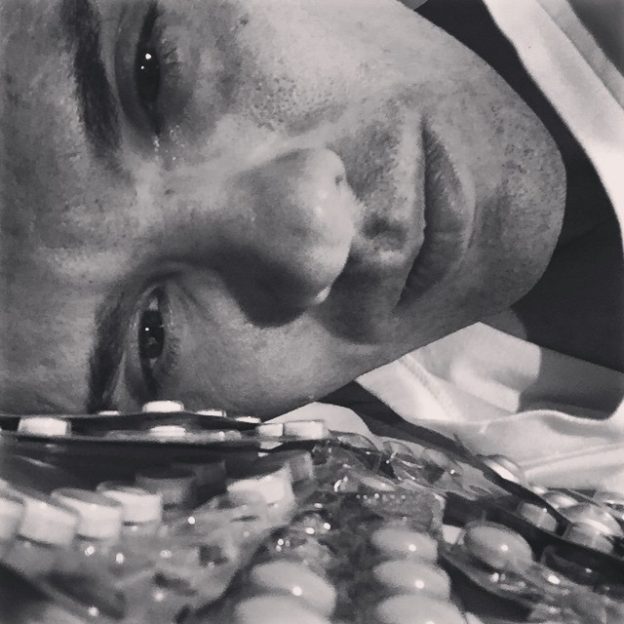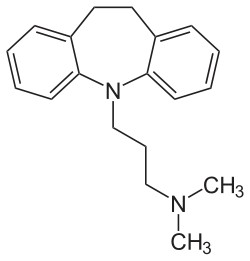Antidepressants — List of Drugs and Side Effects
Table of Contents
Introduction
Antidepressants are a heterogeneous group of chemically different drugs used for the treatment of major depression. They are also used for other conditions such as anxiety disorders, obsessive-compulsive disorders, and chronic pain.
The first antidepressant was imipramine, which was discovered in 1957 by psychiatrist R. Kuhn. Currently, the antidepressants are divided into the following main classes of drugs:
- Tricyclic antidepressants (TCAs)
- Selective serotonin reuptake inhibitors (SSRIs)
- Norepinephrine reuptake inhibitors (NRIs)
- Serotonin-norepinephrine reuptake inhibitors (SNRIs)
- Monoamine oxidase inhibitors (MAOIs)
Each class of drug is different from each other with regards to its chemical structure, mode of action, safety profile, efficacy and adverse effects. Their action is based on re-elevating mood and activation on the psychomotor drive, leading to the subsiding of physical symptoms of depression. There is no risk of dependency.
Pharmacology and Biochemistry of Antidepressants
The mode of action of antidepressants is essential for the understanding of the development of depressive disorders. The amine mood hypothesis postulates that the amine neurotransmitters, particularly norepinephrine and serotonin, are dysbalanced in mood disorders. They are decreased in patients with depression, while they are increased in mania and psychosis
Understandably, most of the antidepressants raise the concentration of neurotransmitters norepinephrine and serotonin in the synaptic gap by either inhibiting their reuptake into the neurons or inhibiting their enzymatic breakdown.
Tricyclic antidepressants (TCAs)
The name tricyclic antidepressants (TCAs) is based on their hydrophobic, three-membered ring system. TCAs do not show any affinity to a certain neurochemical transmitter system but exert influence on the norepinephrine and serotonin system by other means.
TCAs also bind to peripheral acetylcholine, histamine, and adrenergic receptors that explain many of their adverse effects.
Like neuroleptics, TCAs show two distinctive effects.
- First, the immediate sedative effect that is characterized by sedation, sleepiness, and reduction of mental and physical activity. This effect is also observed in the healthy individuals.
- Second, the antidepressant effect, that solely occurs after long-time use, is only detected in patients with depression and mood disorders.
Selective serotonin reuptake inhibitors (SSRIs)
As the name implies, the selective serotonin reuptake inhibitors (SSRIs) inhibit the reuptake of serotonin into the presynaptic neurons from the synaptic gap by blocking the serotonin transporters.
Unlike TCAs, these drugs do not block histamine, muscarinic or adrenergic receptors, hence they have less adverse effects and are often the first line drugs in the treatment of major depression.
Norepinephrine reuptake inhibitors (NRIs)
Similar to the mechanism in SSRIs, the norepinephrine reuptake inhibitors (NRIs) prevent the reuptake of norepinephrine into the presynaptic neuron. They are suitable for treatment of mild depression.
Drugs: Reboxetine
Serotonin-norepinephrine reuptake inhibitors (SNRIs)
In this class, both serotonin and norepinephrine reuptake is inhibited into the presynaptic neurons.
Venlafaxine inhibits the reuptake of serotonin, norepinephrine, as well as of dopamine. Interestingly, at lower doses, there is mainly a serotonin reuptake inhibition followed by an additional norepinephrine reuptake inhibition in higher doses. Hence, venlafaxine is suitable for treatment of depression in combination with anxiety disorders.
Duloxetine is taking a special position among SNRIs. Duloxetine is intended to be used for a particular indication, namely, stress urinary incontinence in depressive women. The effect is based on the influence on the Onuf’s nucleus located in the sacral region of the spinal cord which is the origin of the pudendal nerve motor neurons.
Image: “Inhibiting the reuptake transport protein results in increased concentrations of serotonin and norepinephrine in the synaptic clefts, leading to improvement of depression symptoms.” by Thomas Splettstoesser (www.scistyle.com) – Own work. License: CC BY-SA 4.0
Monoamine oxidase inhibitors (MAOIs)
Monoamine oxidase enzyme catalyzes the breakdown of neuro-active and vaso-active amines. The MAO-A (monoamine oxidase type A) metabolizes norepinephrine, serotonin, dopamine, and tyramine, while MAO-B (monoamine oxidase type B), metabolizes dopamine. The monoamine oxidase inhibitors (MAOIs) block these enzymes and hence increase the levels of these neurotransmitters in the synaptic cleft.
The ingestion of tyramine has to be restricted to avoid serotonin hyperfunction syndrome, which entails fever, muscle twitching, hypertensive crisis, sweating, nausea, and hallucinations. Foods rich in tyramine are chocolate, red wine, bananas and ripened cheese, that is why it is also referred to as cheese-effect.
Drugs: Tranylcypromine (obsolete), Moclobemide.
Selegiline, the MAO type B inhibitor, is used in the treatment of parkinsonism.
Practical Application
Antidepressants are used in everyday clinical practice due to their drive-enhancing or sedating effect. Their efficacy is proved in well-controlled studies. Therefore, combining psychotherapeutic and psychopharmacological treatment is recommended for the major depression. Further indications are anxiety disorders, obsessive-compulsive disorders, chronic pain, and eating disorders (bulimia).
The antidepressant agents are started at lower doses and are slowly increased over time. The antidepressant effects begin after two-to-three weeks. In principle, only one antidepressant should be prescribed. The antidepressant drug should be selected depending upon the patient’s general health, other co-morbid conditions, and side effects. If no improvement is observed after several weeks of treatment with adequate dosage, therapy can be changed to another antidepressant after confirmation of the diagnosis.
In suicidal patients, there is an increased frequency of suicide attempts in the first three weeks and should be closely supervised. In most cases, tranquilizers like benzodiazepines or neuroleptics are co-prescribed to reduce the risk of suicide in the first few weeks.
The duration of the treatment has to be considered individually. In a single depressive episode, a six-month therapy with a focus on remission must be sought, followed by a gradual phasing out. It is absolutely necessary to avoid abrupt withdrawal since abnormal reactions or even suicidal thoughts could arise. This is called rebound.
In multiple episodes of depression, a 5-year-long therapy with antidepressants should be taken into account. A longer period is possible if there are no major complications. In bipolar disorder, lithium can be used as a mood stabilizer.
A therapy-resistant depression is one where symptoms remain, even though treatment was done with two correctly chosen and correctly dosed antidepressants successively over a period of three weeks each. In such cases, electroconvulsive therapy has proved to be effective because of the higher plasma levels, compliance and the positive psychodynamic influence of the electroconvulsive therapy.
Image: “An illustration depicting electroconvulsive therapy.” by BruceBlaus – Own work. License: CC BY-SA 4.0
Adverse Effects and Contraindications
In treatment with tricyclic antidepressants, the anticholinergic adverse effects are prominent. Among them are orthostatic hypotension, constipation, dry mouth, and tachycardia. The TCAs also cause urinary retention in elderly men, ECG abnormalities, and life-threatening arrhythmias.
SSRIs are the first-choice drugs due to better safety profile and less adverse effects. Self-limiting nausea, and vomiting, as well as inner restlessness, may occur at the beginning of therapy. SSRI-caused sexual dysfunction is one of the main reasons for the lack of compliance and a premature termination of treatment. Symptoms are reduced libido, anorgasmia, and genital numbness.
It is important to differentiate drug adverse effects from symptoms of a major depressive disorder. Adverse effects typically occur in the first days of therapy, hence the slowly increasing application. The major adverse effects of each class of antidepressants are summarized in the following table.
Regular medical examinations are necessary during antidepressant therapy to check for blood counts, kidney and liver functions. Furthermore, blood pressure, ECG and EEG checks are recommended.
Contraindications
TCAs are contraindicated in angle closure glaucoma, pyloric stenosis, prostatic hypertrophy, and status post-acute myocardial infarction.
Selective serotonin reuptake inhibitors must not be prescribed along with MAOIs, L-tryptophan, and triptans to avoid serotonin hyperfunction syndrome.
Review Questions
The correct answers can be found below the references.
1. A 34-year-old woman presents herself for the first time in your office. She reports that she has felt joyless and tired for the last eight months. Before that, she used to exercise or go out with friends after work. Now, she has to lay down in bed immediately, her dishes pile up in the kitchen because she has lost the motivation to do so. She never had such a low mood before. You assume that she has a mild to the medium depressive episode and prescribe an antidepressant. What substance is your first choice?
- Valdoxan
- St. John´s Wort
- Venlafaxine
- Reboxetine
- Citalopram
2. What is the antidote in acute intoxication with amitriptyline?
- Physostigmine
- Atropine
- Naloxone
- Acetylcysteine
- Methylene blue
3. Tricyclic antidepressants have all of the following adverse effects except:
- Dependency
- Orthostatic dysregulation
- Sexual dysfunction
- Voiding disorders
- Mouth and nose dryness




Comentários
Enviar um comentário